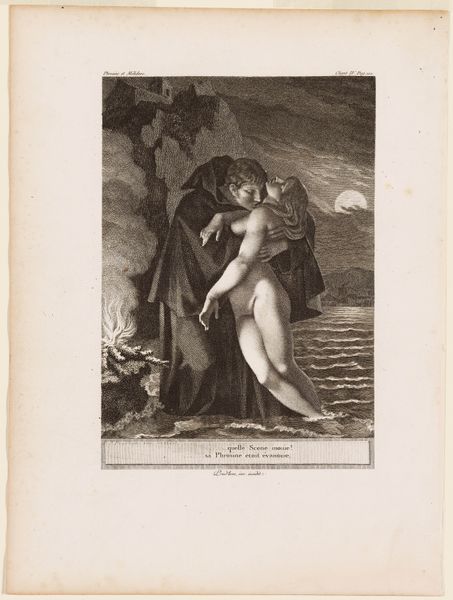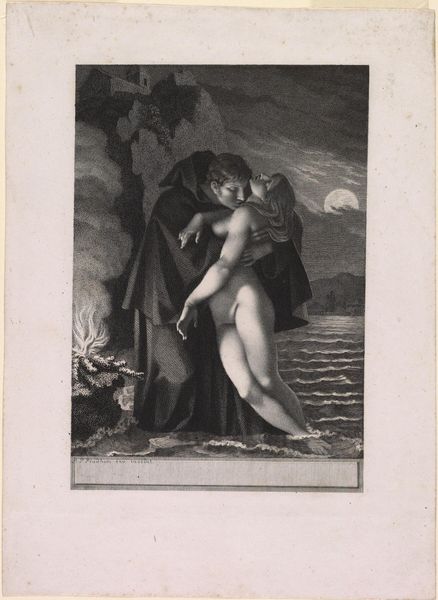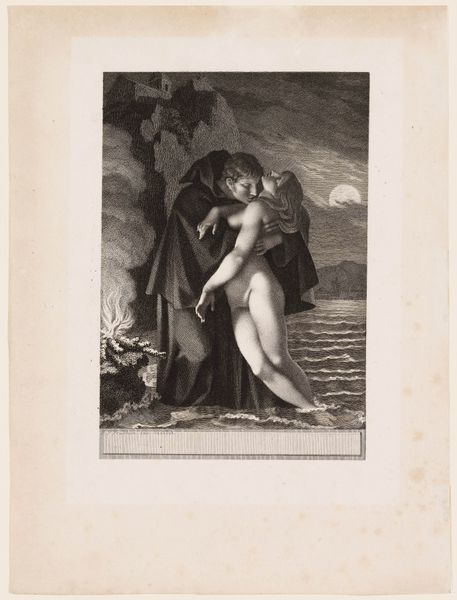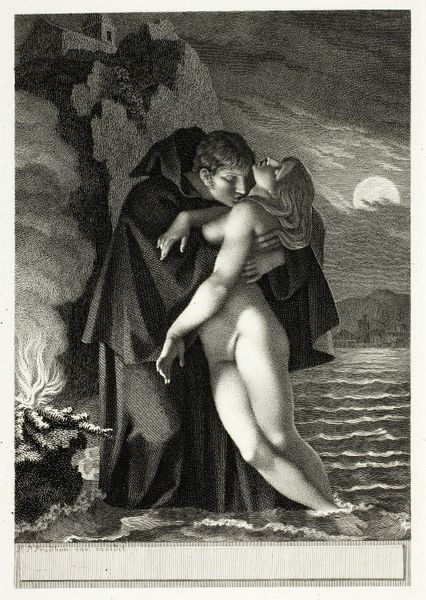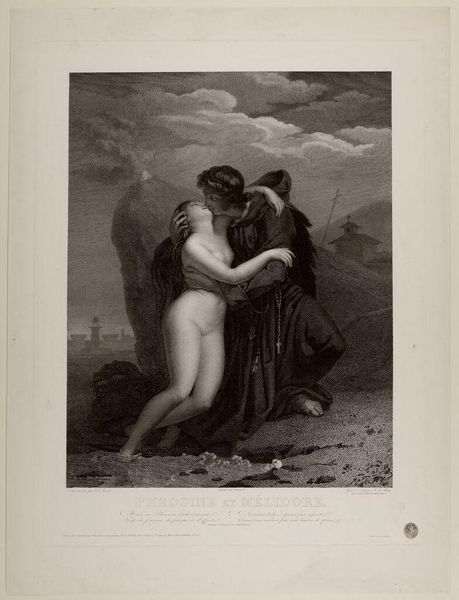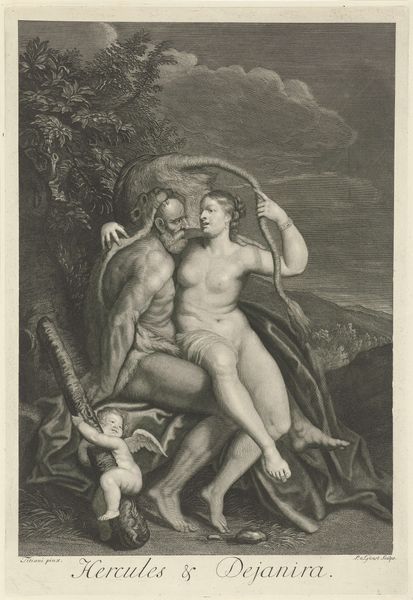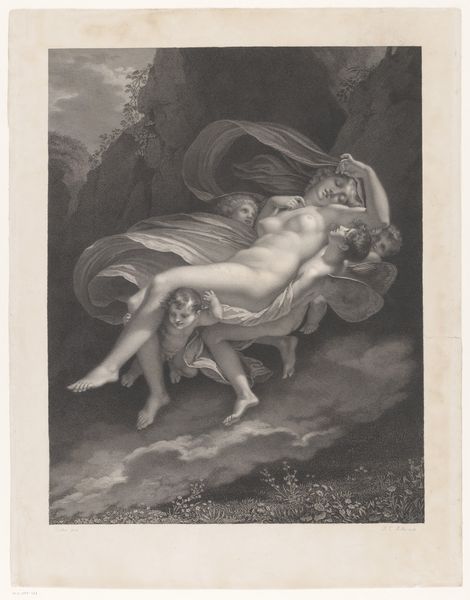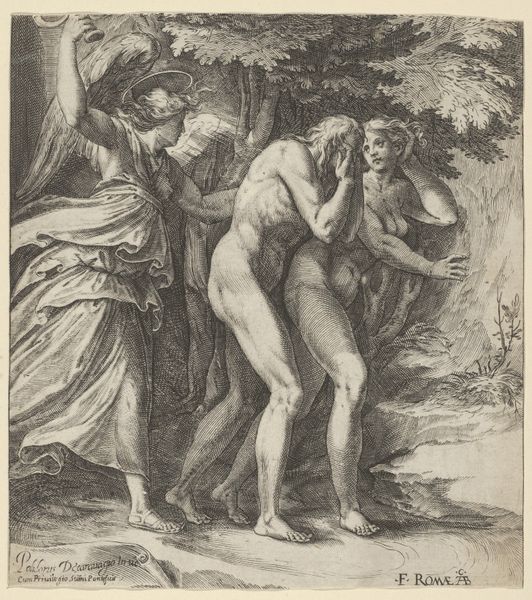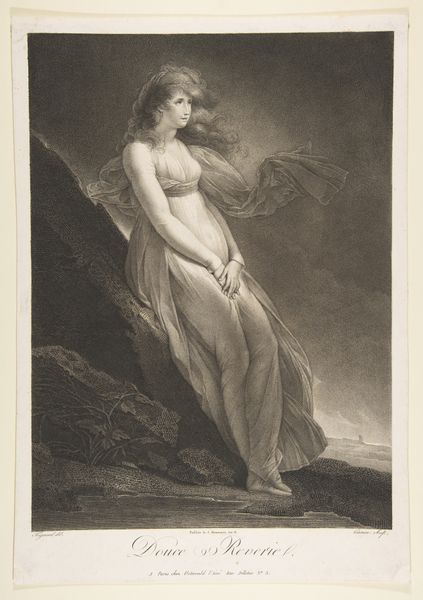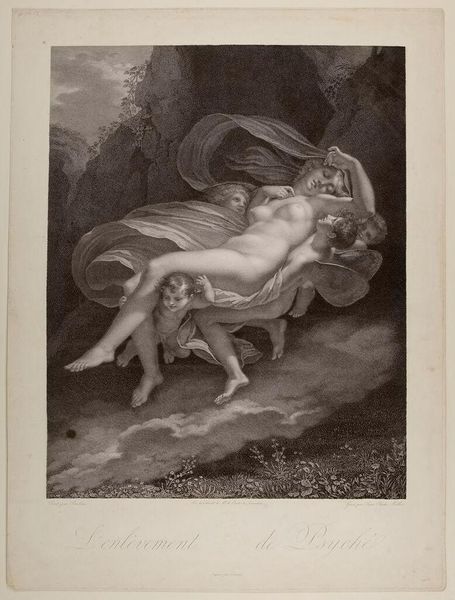
print, engraving
#
16_19th-century
# print
#
light coloured
#
charcoal drawing
#
figuration
#
romanticism
#
19th century
#
history-painting
#
nude
#
engraving
Dimensions: 7 11/16 x 5 3/4 in. (19.53 x 14.61 cm) (plate)10 11/16 x 7 13/16 in. (27.15 x 19.84 cm) (sheet)
Copyright: Public Domain
Editor: So, here we have Pierre-Paul Prud'hon’s "Phrosine et Mélidore," an engraving from 1797. I find it quite theatrical, almost like a scene from a play. It’s small and rendered in light grey tones that enhance its dream-like quality. What do you see in this print? Curator: Indeed, Prud'hon was working within a very specific historical and cultural context. Think of the French Revolution and its aftermath. Romanticism, a movement that favored emotion and individual experience over strict Neoclassical rationality, gained momentum precisely when old institutional ways of art were collapsing. How does the presentation of the figures challenge conventional heroic depictions prevalent before the revolution? Editor: I guess it is because they seem so vulnerable, not idealized heroes at all. Curator: Exactly! The figures' intimacy and the wild, somewhat chaotic landscape mark a rejection of the stoic, civic virtue that defined much pre-Revolutionary art commissioned by institutions and aristocrats. Note the medium: this work could be reproduced and dispersed widely. It allows access to those beyond the formal galleries and salons controlled by the Academy, spreading its new visual language into broader segments of French society. Who were the consumers of such work at the time, and why would this theme resonate with them? Editor: Perhaps the print appealed to a burgeoning middle class with newfound access to art and narratives focused on individual emotions rather than grand historical events. The nude woman definitely hints at a changing role for art and taste as well, one becoming more liberal… Curator: Precisely. So, how does this viewing impact your original impression? Editor: Seeing it in the light of those social changes and political unrest of that period certainly adds to the original observation, I realize now I can not unsee that cultural layer. Curator: Exactly. And now we see the piece beyond personal impression, we understand it as a social product that reflects shifts in society, power, and access to visual culture.
Comments
No comments
Be the first to comment and join the conversation on the ultimate creative platform.
